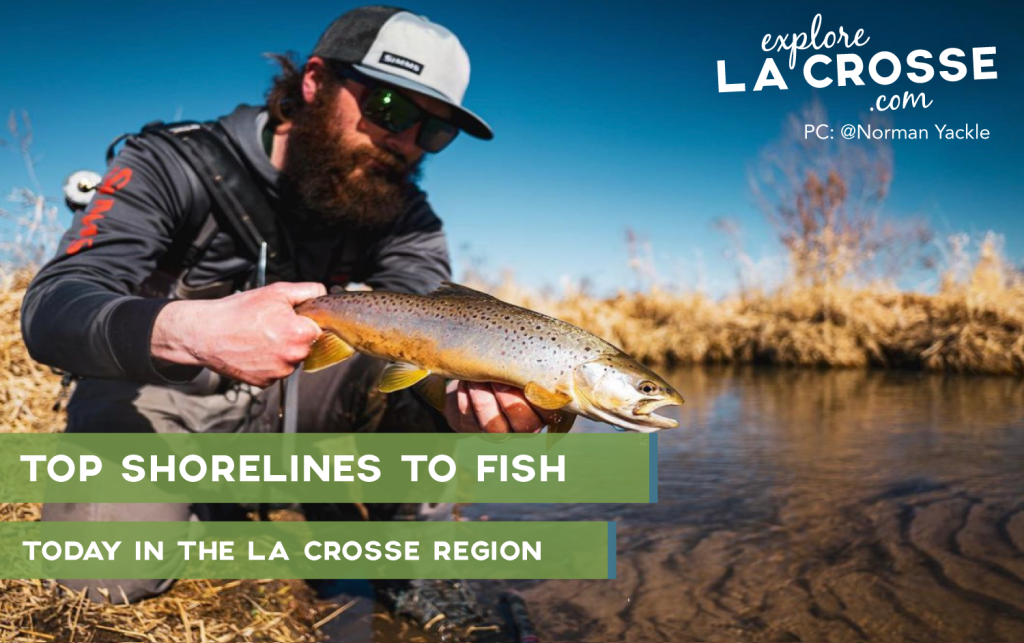We at the U.S. Fish and Wildlife Service are celebrating Upper Mississippi River National Wildlife and Fish Refuge, which was established 95 years ago this month. Bordered by steep wooded bluffs that rise 100 to 600 feet above the river valley, the Mississippi River corridor and refuge offer scenic beauty and productive fish and wildlife habitat unmatched in the heart of America. Take a moment to learn more about this extensive refuge and plan a trip to experience it first-hand.
During the rush of the 1920s the Izaak Walton League and their first president, Will Dilg, championed the protection of this huge refuge. The “Ikes” were the original friends group of the refuge and helped to set the course for conservation of what would later be designated as both a nationally significant ecosystem and a nationally significant navigation system.
Running the length of Minnesota, Wisconsin, Iowa and Illinois, along the Mississippi River, the refuge encompasses one of the largest blocks of floodplain habitat in the lower 48 states and boasts healthy habitats and great fishing to this day. Covering more than 240,000 acres and extending 261 river miles from north to south, Upper Mississippi River National Wildlife and Fish Refuge supports abundant native fish, wildlife and plants. The refuge also collaborates through a partnership between four states, the U.S. Army Corps of Engineers, U.S. Geological Survey, several dedicated Friends groups and various nongovernmental organizations who collectively maintain the river’s environmental health and water quality.
As with most river-focused refuges, Upper Mississippi River National Wildlife and Fish Refuge provides excellent opportunities for boating, fishing and birding. The refuge’s scenic beauty and fee free access attracts people year-round from all over the world. The refuge is an anglers’ paradise, and is known for walleye, largemouth bass, crappie, catfish and bluegill. There are year-round fishing opportunities including many ice fishing locations. Fishing is allowed in accordance with state and federal regulations.
The refuge is more than just fishing and boating though! Sportswomen and men from across the country come for quality waterfowl hunting, trapping and other consumptive uses like berrypicking and draw tens of thousands visitors annually. Although boating provides the most intimate look at this river system, many visitors enjoy viewing the refuge’s wild and scenic beauty from blufftop overlooks in state and local parks bordering the refuge. The refuge and its wildlife mark time by the ancient rhythms of spring, summer, fall and winter.
April and May are some of the best times to see songbird migration. Stopping at a boat landing and taking time to scan the treetops way to see all sorts of warblers. Following the Great River Road on both sides of the river, you’ll discover several walking trails and observation decks with spotting scopes to help you spot wildlife. Bring along your pair of binoculars for the best views though.
It’s also fun to check out the floodplain forest to spy great blue herons, great egrets and double-crested cormorants where they nest in rookeries. On the river, look for groups of American white pelicans feeding in formation or soaring over the refuge. The sora rail, known as the laughter of the marsh, is the most common marsh bird at the refuge. Upper Miss is home to 11 species of frogs and toads. You’ll probably hear them sing, chirp and croak if you visit April through August. Listen for them in the evenings at the marsh.
Fall colors are the backdrop for thousands of waterfowl migrating back to their wintering grounds. Migrating tundra swans grace the refuge through freeze-up. During peak fall migration in late October, hundreds of thousands of canvasbacks, common mergansers, goldeneyes, mallards, shovelers, blue-winged teal, and coots gather on the refuge.
Tracks in snow remind you that winter is alive with activity. A track made by otter sliding on the ice or a deer path across the ice are often discovered on a winter outing. Hundreds of wintering bald eagles congregate near open water snatching fish with their talons and soaring to the treetops to eat their prey.
Onalaska, Wisconsin is home to a welcoming visitor center with exhibits and walking paths through the prairie. Stop in for special programs throughout the year. Thomson, Illinois is home to the Ingersoll Wetlands Learning Center and includes wildlife exhibits and a knowledge staff who can tell you all about the resident, nesting bald eagle trio and you can check them out over the eagle cam.
Thanks for taking some time to learn about Upper Mississippi River National Wildlife and Fish Refuge as we mark 95 years of conservation, excellent recreation and fun adventures.
Learn more about Upper Mississippi River National Wildlife and Fish Refuge and plan your trip!



